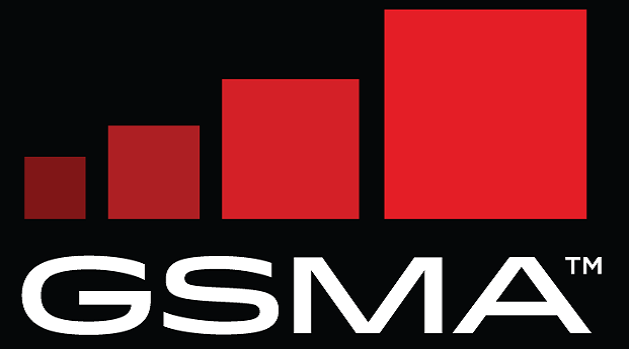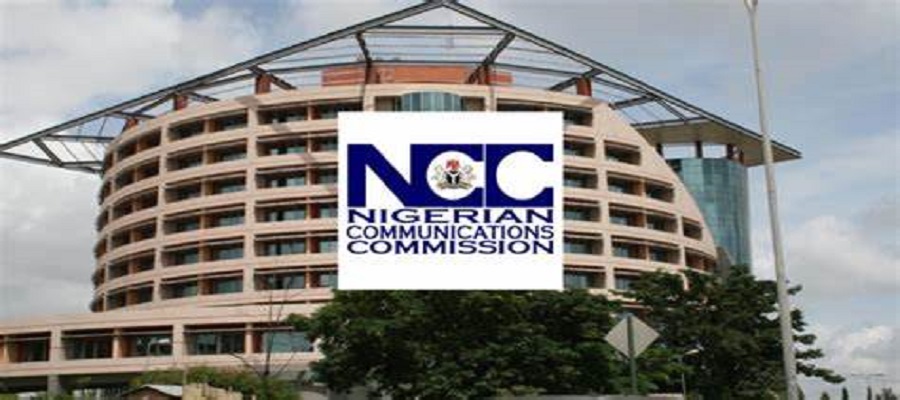Telecom
GSMA Hails Groundbreaking Spectrum Decisions @ WRC-23

The World Radiocommunication Conference 2023 (WRC-23) concluded this week with groundbreaking spectrum decisions that will shape the future of mobile communications.

Governments agreed on new mobile low-band spectrum (below 1 GHz) and mid-band spectrum in the 3.5 GHz and 6 GHz ranges. The GSMA, which represents mobile operators worldwide, welcomed these outcomes that will allow the mobile sector to plan the next wave of communications development through 5G-Advanced and beyond.
World Radiocommunication Conferences are held every four years under the auspices of the International Telecommunication Union (ITU), a specialised United Nations agency for information and communication technologies. These treaty conferences have the power to change international agreements on the use of radio spectrum.
For mobile, referred to at the ITU as International Mobile Technologies (IMT), WRCs serve an essential role in harmonising spectrum. Harmonsiation ensures economies of scale and facilitates planning for new spectrum bands to address data growth and deliver a bright future of sustainable connectivity.
“WRC-23 has provided a clear roadmap for mobile services to continue to evolve and expand for the benefit of billions across the globe,” said John Giusti, Chief Regulatory Officer at the GSMA.
“The GSMA believes that no-one should be left behind in the digital age and the decisions of WRC-23 will allow us to deliver a brighter future where mobile brings communities together, delivers industrial agility and provides economic growth. Implementation of the WRC-23 decisions will support global digital ambitions, deliver greater digital equality and unlock the full power of connectivity.”
WRC-23 took strong action to meet mobile data growth by identifying additional mid-band spectrum for mobile. Final harmonisation of the 3.5 GHz band (3.3-3.8 GHz) – the pioneer 5G band – was achieved across Europe, the Middle East and Africa (EMEA) as well as throughout the Americas. Notably, a new band – the 6 GHz band (6.425-7.125 GHz) – was identified for mobile in every ITU Region – EMEA, the Americas and the Asia Pacific.
Countries representing more than 60% of the world’s population asked to be included in the identification of this band for licensed mobile at WRC-23. The 6 GHz spectrum is now the harmonised home for the expansion of mobile capacity for 5G-Advanced and beyond.
WRC-23 also set out a path towards greater digital equality by defining mobile use of more low-band spectrum in the 470-694 MHz band in EMEA. Low bands can help expand capacity for the internet connectivity of rural communities as their signals reach over wide areas.
WRC-23’s new low-band mobile allocations will be an important tool to break down the barriers towards digital equality in the EMEA region and lower the urban/rural connectivity divide.
“Over half the world is connected to the mobile internet today,” said Luciana Camargos, Head of Spectrum at the GSMA. “But, as mobile connectivity develops, we need to ensure that we can deliver services for everyone. The great legacy of WRC-23 will be in allowing us to do so sustainably, affordably and in a way that delivers for the whole planet.
“We cannot stop here – WRC-23 is only the starting gun and now governments will need to act on its decisions, enabling new mobile technologies that embrace sustainability and unleashing the full potential of mobile to deliver a better tomorrow for our planet.”
The UAE, and its telecoms regulator TDRA, were recognised by delegates for hosting an unforgettable WRC, ensuring that ITU member states had the facilities needed to engage in the long and complex negotiations.
As a result of their leadership in chairing the conference, WRC-23 will be remembered for its balanced yet bold decisions that will deliver digital evolution and connect the world.
Mobile spectrum discussions at WRC-23 focussed on three core ranges:
- Low-band spectrum is ideal for covering wide areas with lower population density. This makes it an important natural resource that can deliver digital equality. The GSMA believes access to connectivity should not be dependent on where a person lives and progress on low-band spectrum will help ensure that digital equality is achieved between urban and rural areas. In low and middle-income countries, adults are 29% less likely to use the mobile internet if they live in a rural area compared to their urban counterparts. Increasing low-band capacity can help support better rural networks.
- City-wide capacity requires mid-band spectrum to deliver the main weight of connectivity requirements. The 3.5 GHz range is the birthplace of 5G and is assigned in over 80 countries already. The further harmonisation of the 3.5 GHz range at WRC-23 will allow more countries to take advantage of economies of scale in the mobile ecosystem and benefit from higher speeds provided by wide spectrum channels in this range.
- On average, 2 GHz of mid-spectrum spectrum per market will be needed by 2030 to meet the demand of citizens and businesses in cities around the globe. The 6 GHz band is the only remaining mid-band spectrum currently available to respond to the data traffic growth in the 5G-Advanced era. The WRC-23 decision to harmonise the 6 GHz band in every ITU Region is a pivotal milestone, bringing a population of billions of people into a harmonised 6 GHz mobile footprint. It also serves as a critical developmental trigger for manufacturers of the 6 GHz equipment ecosystem.
Telecom
NCC Bars Ex-Officials from Joining Telecom Firms for 5 Years

Nigerian Communications Commission (NCC) has introduced strict corporate governance rules that will bar its top officials from taking up roles in telecom companies they regulate until five years after leaving office.

Under the new Corporate Governance Guidelines for the Communications Industry, the Chairman, Executive Vice-Chairman, and Board Commissioners, both executive and non-executive, are barred from being appointed to any position in a licensed telecom company until five years after their exit from the Commission.
Similarly, Directors of Departments at the NCC face a three-year cooling-off period before they can take jobs with any licensee under the Commission’s supervision.
The move, announced on August 11, 2025, seeks to enhance transparency, accountability, and ethical standards in Nigeria’s fast-growing telecommunications industry.
Departmental directors face a three-year cooling-off period before joining any licensee under the agency’s oversight.
This policy aims to prevent conflicts of interest and ensure impartial regulation.
By creating a clear separation between regulators and the industry, the NCC hopes to curb undue influence and maintain public trust.
]The guidelines reflect a global trend in regulatory bodies enforcing cooling-off periods.
Similar measures exist in industries like finance and energy to safeguard against regulatory capture.
For Nigeria’s telecom sector, this is a significant step toward aligning with international best practices.
The NCC’s new framework also targets telecom operators’ internal governance.
Board chairmen or vice-chairmen are barred from holding executive powers or serving as MD/CEO of a licensee.
Former board chairmen and non-executive directors must wait five years before assuming executive roles in the same company or its affiliates.
Additionally, no more than two family members can serve on a licensee’s board simultaneously.
These measures aim to promote balanced board structures and reduce nepotism.
Dr Aminu Maida, executive vice-chairman, NCC, emphasised the importance of these reforms.
“Corporate governance is no longer a soft requirement. It is now a strategic imperative,” he said during the guidelines’ launch in Lagos.
Maida highlighted that robust governance correlates with better business performance, citing an NCC internal review. Companies with strong governance frameworks consistently outperform peers in service delivery, financial management, and regulatory compliance.
Nigeria’s telecom sector is a cornerstone of its digital economy. With over 222 million active mobile subscriptions as of Q1 2025, the industry supports critical sectors like finance, healthcare, and education.
However, challenges like cybersecurity threats, energy shocks, and rising consumer demands have exposed governance weaknesses. The NCC’s new rules aim to address these by fostering transparency, accountability, and innovation.
The guidelines apply to all communications companies holding individual licences and paying Annual Operating Levies (AOL) under the AOL Regulations 2022.
The NCC has indicated flexibility in applying the rules across different licence categories, with phased compliance measures to be communicated in writing. While the rules may cause short-term disruptions for operators, the NCC insists that long-term benefits, like improved service quality and market trust, will outweigh these challenges.
Telecom
Airtel, Vodacom sign Network Infrastructure Agreement to Drive Digital Inclusion

Airtel Africa and Vodacom Group have announced a strategic infrastructure sharing agreement in key markets including Mozambique, Tanzania and the Democratic Republic of Congo (DRC), subject to regulatory approvals in the various countries.

The agreement marks a transformative milestone in promoting digital inclusion and expanding access to reliable connectivity across Africa.
The initial partnership focuses on sharing fibre networks and tower infrastructure, to accelerate the roll-out of digital services in these markets, increasing connectivity for customers while reducing operators’ infrastructure costs and improving speed to market.
By leveraging existing infrastructure, the collaboration aims to deliver improved connectivity, faster internet speeds, and more reliable services. This will not only enhance customer experience but also assist with providing access to digital services for a broader population, particularly those in underserved areas, helping to bridge the digital divide in Africa.
Vodacom Group’s chief executive officer Shameel Joosub said: “Providing connectivity to empower people is at the core of our strategy. Our partnership with Airtel Africa is a proactive step forward in creating a sustainable, inclusive, and connected digital future for the continent.
Through infrastructure sharing, we can provide cost-effective services to more people, more rapidly, ensuring that no one is left behind in the digital age. As we fulfil our ambition to connect 260 million customers by 2030, the need for scalable and cost-efficient network solutions becomes increasingly significant.
This partnership provides us with the opportunity to narrow the digital divide, empowering more individuals and communities through digitalisation across the continent. It is aligned with our purpose to connect for a better future,” concludes Joosub.
Airtel Africa’s chief executive officer Sunil Taldar said: “This partnership is aligned with our unwavering commitment to delighting our customers by always making our network available to them even in the remotest locations.
“Working with Vodacom, we will open greater access to digital and financial opportunities which will transform the lives of our customers while complying with all regulatory requirements.
“Even as competitors, it has become a business imperative for us to collaborate in the provision of critical infrastructure required to build resilient network with strong capacity to support the emerging digital technologies as well as the growing need for data-enabled products and services.
“Accelerating the deployment of fibre connectivity is a key enabler in the acceleration of 4G and 5G technologies in Africa to deliver the high-speed, low-latency, and reliable connections needed for modern digital applications.
“This partnership allows for further opportunities for both operators to enhance network performance, extend coverage, and increase mobile, fixed, and financial services leveraging a broader footprint on the continent.”
Telecom
Truecaller Crosses 100m Users in MEA Region

Truecaller, a global caller ID and spam prevention platform, has reached 100 million active users in the Middle East and Africa (MEA) region, representing a 19% year-over-year increase.

According to the platform, the region’s main markets include Egypt, Nigeria, South Africa, Kenya, Algeria, Ghana, and Jordan.
Truecaller is routinely utilised on 20% to 45% of connected cellphones in these areas, including Android and iOS devices, according to the business.
The app has gained traction across the African continent with its concept of resolving communication issues for individuals and businesses by blocking unsolicited calls.
It has also collaborated with local businesses, forming major partnerships including a recent cooperation with Telecom Egypt to change consumer communication and experience by providing safe, customised, and seamless calling experiences.
Truecaller’s CEO, Rishit Jhunjhunwala, stated that the service has grown organically in markets such as MEA and India due to the mobile first environment, which uses a user’s mobile number as the primary identifier of calls. He under-lined that the MEA market provides a growth-enabling environment.
“We’re continuing to strengthen our organisation and our partnerships in the region, because we believe that the MEA is poised for significant growth for many years ahead,” said Jhunjhunwala.

 News2 days ago
News2 days agoGoogle Hit by AI-driven Cyber Attack

 General News2 days ago
General News2 days agoKuwait Busts Nigerian Cybercrime Ring Targeting Telecom Tower, Banks

 News2 days ago
News2 days agoFIRS Rolls out e-invoicing System for Large Corporate Taxpayers

 E-Business2 days ago
E-Business2 days agoZequence Digital Boss Calls for Strong IP Laws Enforcement, to Protect Nigeria’s Software Sector

 E-Business2 days ago
E-Business2 days agoPalmPay Partners AXA Mansard Health to Make Digital Insurance Accessible, Affordable

 Telecom2 days ago
Telecom2 days agoMTN Nigeria’s Mega Billion Promo Turns Airtime into Fortune for Thousands Amid Economic Strain

 Telecom2 days ago
Telecom2 days agoT2 Commits to Innovation, Resilience as Customer-centric Ethos Form New Focus

 Telecom2 days ago
Telecom2 days agoI see Crisis, Resignations @ MTN, Airtel, Others – Primate Ayodele



























